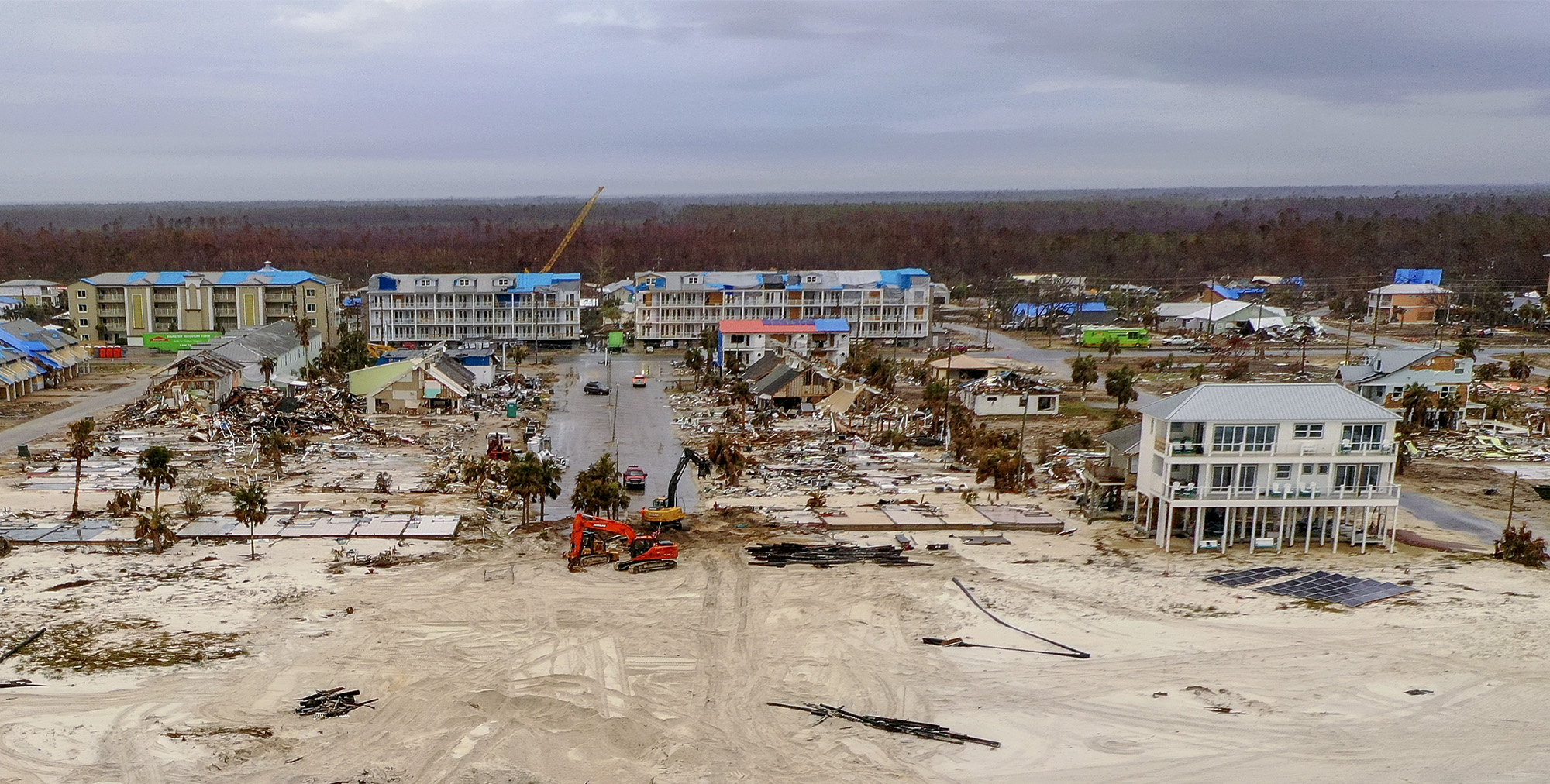
Five years after Hurricane Michael struck in October 2018, the storm’s aftermath goes far beyond the $25 billion worth of damage it caused. This catastrophic event had a far-reaching impact, touching every aspect of life for those affected. Let’s look at the storm’s effects and how it provided lessons on how to build better to protect homes and families from future natural disasters.
Impacts of Hurricane Michael
With windspeeds up to 160 mph and a storm surge of 9 to 14 feet, Hurricane Michael left infrastructure in its wake in varied conditions. Homeowners had to deal with flood damage, mold, fixing or replacing roofs, fallen trees, and partially or entirely collapsed structures, forcing complete home rebuilds. In the resulting months, many reported that insurance didn’t cover the full scope of the necessary repairs.
According to a survey conducted by the Wharton Risk Center and Resilience Action Fund, homeowners affected by Hurricane Michael shared significant additional costs beyond just property damage. They also cited ongoing financial impacts from debris clean up, generators, fuel, evacuation, temporary housing, medical expenses, legal fees and lost income. For example, if one’s workplace was unusable, they couldn’t get paid, putting them further behind in an already difficult situation. Rehousing elderly or sick family members, even pets, was also a costly logistical burden.
All of this does not even take into account the storm’s emotional toll due to injuries and losing one’s home, their job or the life of a loved one.

Mexico Beach Devastation
Mexico Beach, part of Florida’s Bay County, was one of the hardest hit cities in the state. Out of its roughly 1,700 buildings, 94% were damaged and 48% were completely destroyed.
While there are numerous reasons behind this, it is important to also factor in the impact of building codes on the performance of these structures. Only two Florida counties, Miami-Dade and Broward, are designated as a high-velocity hurricane zone (HVHZ) which have more stringent building codes mandating wind resistance up to 170 mph, including “shatterproof windows, fortified roofs and reinforced concrete pillars, among other specifications.”
Mexico Beach is not in this area and therefore had less strict codes, which left its buildings vulnerable to Hurricane Michael’s forces. Plus, since most building codes only apply to new construction and significant renovations, even more rigorous criteria would take decades to implement across the residential sector. But it would’ve been a start.

To read the full article click here.











